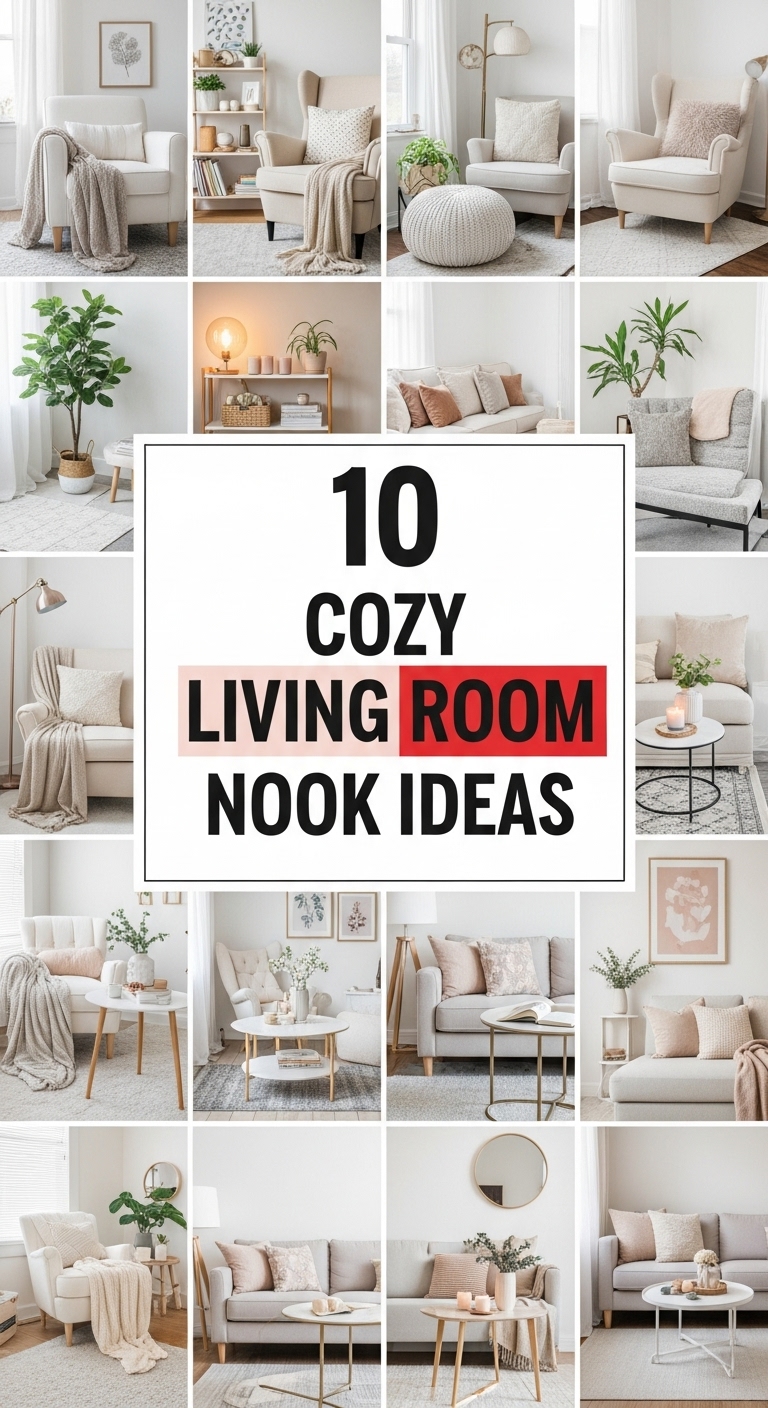The charm of coastal living has long captivated interior design enthusiasts. It represents more than just a décor theme — it’s a lifestyle centered around tranquility, light, and connection to nature. Coastal style interiors bring the serenity of the seaside indoors, evoking memories of ocean breezes, sunlit sands, and the rhythmic calm of the waves.
Among all rooms in a home, the living room is the heart of relaxation and social connection, making it the perfect space to embrace a coastal aesthetic. The goal is to blend comfort with freshness, crafting an airy atmosphere that feels both luxurious and effortless.
This design style is not about seashells and anchors — rather, it’s about subtle sophistication, where natural textures, soothing color palettes, and thoughtful décor come together to create harmony.
Below, we explore 10 coastal style living room inspirations that combine timeless design with the rejuvenating spirit of the sea. Whether you live by the coast or in a city apartment, these ideas will help you bring the breezy beauty of coastal living into your home.
1. Embrace a Light and Airy Color Palette
A true coastal living room begins with color. The palette should reflect the hues of the ocean, sand, and sky — soft whites, sandy beiges, driftwood grays, and gentle blues. These tones create an open, sunlit feel that instantly soothes the senses.
Start by painting your walls in crisp white or warm ivory to maximize light reflection. Then, layer in shades of seafoam, aqua, and pale gray through furniture and textiles. Accent colors like navy, coral, or turquoise can be introduced sparingly for contrast.
A coastal color palette thrives on natural light. Keep window treatments minimal — think sheer linen curtains or light bamboo shades. Allow sunlight to pour in and illuminate your space, enhancing its fresh, airy quality.
Balance is key. Avoid overly bright or saturated blues; instead, choose muted tones that evoke calmness. The goal is to recreate the essence of the shoreline — peaceful, soft, and effortlessly elegant.

2. Incorporate Natural Materials and Textures
Coastal interiors are defined by their connection to nature. Incorporating organic materials like rattan, wicker, jute, and linen gives your living room texture, warmth, and authenticity.
Choose a rattan or wicker armchair for an accent piece that instantly adds character. Jute rugs underfoot lend an earthy texture reminiscent of beachside pathways, while linen cushions and cotton throws enhance the casual, breezy comfort.
Wood also plays a major role. Opt for reclaimed wood coffee tables or driftwood-style finishes on furniture. Whitewashed or bleached wood enhances the coastal vibe, offering a sun-faded, timeworn charm.
For an elevated look, mix textures: smooth ceramics, woven baskets, and soft fabrics all contribute to a rich, tactile experience.
The blend of natural textures captures the balance between land and sea — grounding yet light, rustic yet refined.

3. Choose Comfortable, Casual Furniture
Coastal living rooms should feel lived-in and inviting. The furniture must combine comfort, practicality, and understated elegance.
Start with a large, plush sofa in a neutral tone — soft white, beige, or light gray — upholstered in durable, washable fabric. Slipcovered sofas are a classic coastal choice; they’re stylish, easy to maintain, and evoke relaxed sophistication.
Pair the sofa with armchairs in complementary shades. Consider slipcovered or wicker chairs to enhance the natural aesthetic.
For coffee tables and side tables, choose wood or woven materials. A distressed or weathered finish adds charm, while simple lines maintain an uncluttered feel.
Arrange furniture to promote openness and flow. Avoid overfilling the room; coastal design values spaciousness and comfort.
Layer the seating with textured pillows and lightweight throws, keeping patterns subtle — stripes, soft florals, or nautical-inspired weaves add visual depth without overwhelming the calm atmosphere.

4. Let in Natural Light
Lighting is one of the most defining features of coastal design. The goal is to recreate the sunlit glow of seaside living, filling the space with brightness and warmth.
Large windows are ideal, but even if your living room doesn’t have them, you can still enhance natural light through thoughtful design choices.
Use sheer white curtains or light Roman shades that allow sunlight to filter through. Mirrors strategically placed across from windows can amplify natural light and make the room appear larger.
Choose a light color scheme for walls and flooring to reflect illumination rather than absorb it. Avoid heavy, dark draperies or bulky furniture that blocks light flow.
For artificial lighting, opt for fixtures that complement the airy vibe — think woven pendant lamps, white ceramic table lamps, or lantern-style sconces. The light itself should be warm and soft, echoing the glow of late afternoon sun on the beach.
A well-lit living room instantly feels more open, calm, and inviting — the perfect setting for the coastal aesthetic.

5. Add Nautical and Marine Accents Subtly
While coastal décor often draws inspiration from the ocean, subtlety is crucial to avoid an overly themed look. The charm lies in suggestion, not literal interpretation.
Incorporate marine-inspired elements sparingly — perhaps a piece of coral on a shelf, a framed nautical map, or a rope-accented lamp. A few tasteful touches evoke the seaside without turning the room into a beach souvenir shop.
Artwork is another great medium for expression. Choose coastal photography, abstract ocean scenes, or watercolor prints that complement the overall color palette.
Natural decorative elements such as driftwood sculptures, shells in glass jars, or sea-glass bowls add texture and a sense of place.
Balance these accents with minimalist styling. A clean, uncluttered environment keeps the focus on serenity and space — the essence of coastal living.

6. Use Blue as a Statement Element
Blue is synonymous with the ocean and sky, making it a natural choice for coastal interiors. However, its use should be intentional and balanced.
In a predominantly neutral room, blue accents can introduce vibrancy and depth. Consider navy throw pillows, a sea-blue area rug, or artwork with bold azure tones.
For a more adventurous take, paint one accent wall in a muted shade of blue-gray or teal to ground the space while maintaining softness.
In modern coastal spaces, different tones of blue — from pastel to indigo — can coexist harmoniously when layered thoughtfully. Pairing blue with white and beige maintains balance and prevents visual heaviness.
You can also integrate blue through ceramics, vases, and patterned textiles. The key is to let the color remind you of open horizons and deep seas — refreshing, timeless, and full of calm energy.

7. Incorporate Coastal-Inspired Art and Photography
Art plays a central role in defining a room’s personality. For a coastal-style living room, artwork should reflect the serenity and wonder of nature without overpowering the space.
Consider large-scale ocean photography or watercolor prints depicting waves, seascapes, or beach scenes. Soft tones and abstract compositions work beautifully to evoke mood rather than depict detail.
A gallery wall of small framed coastal prints can add interest to a blank space. Mix photography, sketches, and minimal art pieces in cohesive colors like beige, white, and pale blue.
For a modern twist, include textural wall art — perhaps canvas prints with raised paint textures or woven wall hangings in natural fibers.
Sculptural art pieces, such as driftwood or ceramic coral, can bring three-dimensional charm. Each art choice should enhance the sense of calm and connection to nature that defines the coastal aesthetic.

8. Create Indoor-Outdoor Flow
One of the defining features of coastal design is its effortless integration with the outdoors. Even if you live far from the ocean, creating an indoor-outdoor connection brings a similar sense of openness and serenity.
If your living room connects to a patio or garden, use large glass doors or sliding panels to merge the spaces visually. Keep flooring consistent or complementary to create a seamless transition.
Incorporate plants and natural greenery indoors. Palm trees, ferns, or succulents in woven planters bring life and freshness to the room.
Use materials that echo outdoor textures — wicker baskets, wooden trays, and ceramic pots — to blur the line between interior and exterior.
Even a few subtle touches — like positioning seating to face a window view or adding a natural fiber rug — can make your living room feel connected to the outside world.
This connection reinforces the relaxed, breathable essence of coastal living, transforming your home into a peaceful sanctuary.

9. Add Cozy Coastal Layers
While coastal interiors are known for their airiness, layering textures and textiles adds comfort and dimension without clutter.
Begin with a natural fiber rug — jute, sisal, or seagrass — as a grounding element. Layer it with a soft cotton or wool throw for tactile contrast.
Mix cushions in complementary tones: light beige, soft blue, and white with subtle patterns like stripes or woven designs. Linen and cotton materials keep the look casual and breezy.
Throws and blankets should be lightweight but cozy, draped casually across sofas or armchairs.
In cooler climates, you can introduce knitted textures or woven throws for warmth without losing the relaxed aesthetic.
Layering brings visual interest and depth, creating a space that feels lived-in and welcoming while maintaining coastal lightness.

10. Focus on Simplicity and Balance
At its core, coastal design is about balance and restraint. It celebrates simplicity, letting natural light, soft colors, and textures take center stage.
Keep furniture arrangements open and uncluttered. Allow space to move freely, reflecting the sense of openness found in seaside landscapes.
Choose décor thoughtfully — a few well-placed items make a stronger impact than many small pieces. Negative space is just as important as decoration.
Avoid heavy drapery, ornate patterns, or dark finishes. Every design choice should contribute to a feeling of calm and effortlessness.
Even modern or contemporary coastal designs rely on this principle. The beauty of simplicity lies in its timelessness — a living room designed around clarity, light, and ease never goes out of style.
When in doubt, ask yourself if each piece enhances serenity. If it doesn’t, let the room breathe.

Conclusion
A coastal style living room is a celebration of serenity, light, and nature’s textures. It’s not defined by proximity to the sea but by the atmosphere it creates — calm, bright, and inviting.
By embracing natural materials, airy colors, and minimal yet thoughtful décor, you can capture the spirit of coastal living anywhere. Each design choice, from the texture of your rug to the hue of your walls, contributes to a space that feels balanced and rejuvenating.
The beauty of coastal design lies in its adaptability. It can be traditional, rustic, or modern, but it always remains rooted in comfort and simplicity.
Whether you choose a palette inspired by sun-bleached driftwood or incorporate modern navy accents, the goal is the same — to create a living room that feels like a gentle retreat, filled with light, peace, and the timeless rhythm of the coast.
Let your home reflect the soothing calm of ocean air and the understated elegance of seaside living. With these ten inspirations, you can design a coastal-style living room that embodies tranquility and timeless beauty every day.











